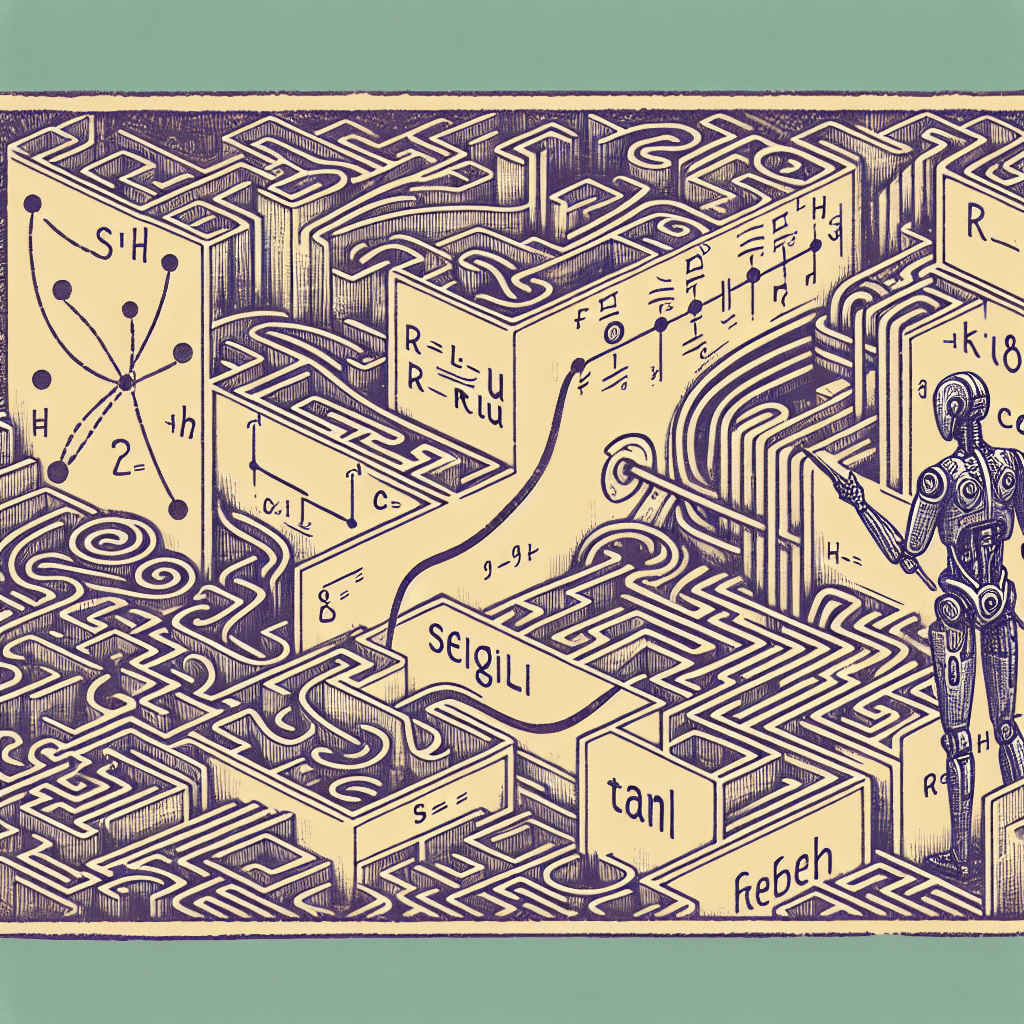Activation Functions and Their Role in Navigation
syndu | Aug. 28, 2024, 2:56 p.m.

Activation Functions and Their Role in Navigation
Introduction: The Importance of Activation Functions
Activation functions are a fundamental component of neural networks, playing a crucial role in determining the output of a node given an input or set of inputs. These functions are essential for enabling neural networks to learn and make decisions, making them indispensable in various applications, including space navigation. In the game Godai: Below, activation functions are represented through visual elements that help players understand their significance and applications.
Understanding Activation Functions
Activation functions are mathematical equations that determine the output of a neural network node. They introduce non-linearity into the network, allowing it to learn and model complex data. Without activation functions, a neural network would behave like a linear regression model, unable to capture intricate patterns in the data.
There are several types of activation functions, each with its unique characteristics and applications:
- Sigmoid Function:
- Equation:
σ(x) = 1 / (1 + e^{-x}) - Range: 0 to 1
- Characteristics: The sigmoid function outputs values between 0 and 1, making it suitable for binary classification problems. However, it suffers from the vanishing gradient problem, where gradients become very small during backpropagation, slowing down the learning process.
- ReLU (Rectified Linear Unit):
- Equation:
f(x) = max(0, x) - Range: 0 to ∞
- Characteristics: The ReLU function outputs the input directly if it is positive; otherwise, it outputs zero. It is widely used in deep learning due to its simplicity and efficiency. However, it can suffer from the "dying ReLU" problem, where neurons can become inactive and stop learning.
- Tanh (Hyperbolic Tangent):
- Equation:
tanh(x) = (e^x - e^{-x}) / (e^x + e^{-x}) - Range: -1 to 1
- Characteristics: The tanh function outputs values between -1 and 1, making it zero-centered. It is often used in hidden layers of neural networks to mitigate the vanishing gradient problem.
- Leaky ReLU:
- Equation:
f(x) = max(0.01x, x) - Range: -∞ to ∞
- Characteristics: The leaky ReLU function allows a small, non-zero gradient when the input is negative, addressing the dying ReLU problem.
Visualization in Godai: Below
In Godai: Below, activation functions are represented through visual elements that show how different inputs lead to different outputs. This visualization helps players understand the role of activation functions in neural networks and their impact on decision-making processes.
For example, players might encounter scenarios where they need to choose the optimal path based on various inputs. The game visually demonstrates how activation functions process these inputs to produce outputs that guide the player's decisions. This interactive representation makes it easier to grasp the abstract concepts of activation functions and their applications.
Applications in Space Navigation
Activation functions play a critical role in optimizing control systems and decision-making algorithms in space navigation. Here are some practical applications:
- Optimizing Control Systems:
Neural networks with activation functions can optimize control systems for spacecraft, ensuring efficient and accurate responses to various inputs. For instance, activation functions can help adjust the thrust of a spacecraft's engines based on real-time data, optimizing fuel consumption and trajectory.
- Decision-Making Algorithms:
Activation functions are integral to decision-making algorithms that guide spacecraft through complex environments. By processing sensor data and other inputs, neural networks can make informed decisions about navigation, obstacle avoidance, and landing procedures.
- Predictive Maintenance:
Activation functions enable neural networks to predict potential failures in spacecraft systems. By analyzing historical data and identifying patterns, these networks can forecast maintenance needs, reducing the risk of unexpected malfunctions during missions.
- Autonomous Navigation:
In autonomous navigation systems, activation functions help neural networks interpret sensor data and make real-time decisions. This capability is crucial for missions involving unmanned spacecraft or rovers exploring distant planets.
Conclusion: Bridging Theory and Practice
Activation functions are a cornerstone of neural networks, enabling them to learn and make decisions. In Godai: Below, these functions are visualized through gameplay, helping players understand their significance and applications. In space navigation, activation functions optimize control systems, enhance decision-making algorithms, and support autonomous navigation, demonstrating their practical value in real-world scenarios.
By bridging the gap between mathematical theory and practical applications, activation functions empower neural networks to tackle complex challenges in space exploration, paving the way for future advancements in the field.





